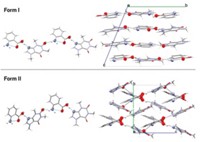Advertisement
Grab your lab coat. Let's get started
Welcome!
Welcome!
Create an account below to get 6 C&EN articles per month, receive newsletters and more - all free.
It seems this is your first time logging in online. Please enter the following information to continue.
As an ACS member you automatically get access to this site. All we need is few more details to create your reading experience.
Not you? Sign in with a different account.
Not you? Sign in with a different account.
ERROR 1
ERROR 1
ERROR 2
ERROR 2
ERROR 2
ERROR 2
ERROR 2
Password and Confirm password must match.
If you have an ACS member number, please enter it here so we can link this account to your membership. (optional)
ERROR 2
ACS values your privacy. By submitting your information, you are gaining access to C&EN and subscribing to our weekly newsletter. We use the information you provide to make your reading experience better, and we will never sell your data to third party members.
Letters to the editor
NDMA in drugs: Ranitidine

The article on the “lurking contaminant” N-nitrosodimethylamine (NDMA), a probable human carcinogen (C&EN, April 20, 2020, page 26), paints a complex and troubling picture of recent findings indicating the presence of low levels of NDMA in a variety of pharmaceuticals. One of the drugs discussed is ranitidine, sold under the trade name Zantac, until recently a widely used prescription and over-the-counter medication for the treatment of peptic ulcer disease, gastroesophageal reflux, and certain other conditions. As a result of finding NDMA in a variety of ranitidine preparations, the manufacturers recently withdrew the drug from the market. Several other drugs with NDMA contamination have also been recalled, including nizatidine, a drug similar to ranitidine in therapeutic use and chemistry.
A variety of potential sources of the contaminant in the various drugs are discussed in the article, including contamination in the active pharmaceutical ingredient due to starting materials, solvents, or reagents used in its synthesis. However, for ranitidine the C&EN article points out that the drug is unstable and undergoes decomposition forming NDMA, accelerated by heat. The article does not discuss the nature of the decomposition reaction, and a review of the literature has not found information on the reaction. We propose a reaction scheme for the decomposition of ranitidine producing NDMA (shown). It should be noted that ranitidine is the hydrochloride salt of the drug structure shown in the scheme.
As the scheme shows, NDMA is derived from the nitro and dimethylamino groups in the drug structure and Cl– and H+ play key roles in the conversion of these groups to NDMA. The formation of ClNO, or nitrosyl chloride, a potent nitrosating agent, is also critical. It would be important to determine whether some of the intermediates and/or products in this scheme (e.g., the product of step 6 other than NDMA or the product of step 4 other than nitrosyl chloride) can be found in the decomposition.
Nizatidine, which is not formulated as the hydrochloride salt, also contains the nitro and dimethylamino groups but this drug has not been shown to undergo the analogous decomposition, and it has been suggested that NDMA found in nizatidine is the result of contamination from other sources, as mentioned above.
Our scheme suggests that replacing Cl– in ranitidine with another, less nucleophilic, anion (e.g., acetate) may reduce or eliminate the decomposition reaction.
Steve Bannister
Tampa, Florida
Joseph Gal
Aurora, Colorado
Nuclear waste

A very important cover story in C&EN’s March 30 issue has the title “Wanted: Long-Term Storage Solutions for Nuclear Waste” (page 28). A lot of this waste really is in the form of a solution. For example, the Hanford, Washington, site has more than 200 million L of pH 14 waste with radioactive strontium and cesium. Waste has accumulated in the leaking double-wall stainless-steel underground tanks for decades. It was decided to vitrify the waste, which will cost billions of dollars. Before vitrification, huge volumes of solution have to be evaporated, and it should take up to 50 years. The project started 20 years ago, but because of many problems, waste treatment at the Hanford Vit Plant is scheduled to start in 2023. Evaporation was good on a small scale when Marie Curie was working. Nevertheless, she died from exposure to radiation. One does not have to be a Nobel Prize laureate to understand that it is incomparably better and safer to selectively remove small amounts of Sr and Cs (less then 100 kg) from huge volumes of solutions than to do it the other way around.
The method to achieve this exists. Through the facilitated transport through supported liquid membranes, it is possible to accumulate strontium from diluted alkaline solutions into sulfuric acid up to saturation and formation of a small volume of solid strontium sulfate. Measured with solutions imitating those in Hanford, transport rates are good enough to decrease the time to treat all tanks to 3–4 years, and the cost may be decreased to one-one-hundredth of the current cost. The method does not need pressure, voltage, high temperature, etc. The simple pH difference between two solutions is a driving factor. Theoretically, in this active transport process it is possible to collect all strontium in the Hanford site tanks and convert it into less than 100 kg of solid material. The same can be done if we treat leaking groundwater and even solutions after the Fukushima, Japan, nuclear disaster. What can be better? Twenty years ago we patented and then published the results, but all our many attempts to attract the attention of the proper organizations were nothing but fiasco.
Nikolai Kocherginsky
Urbana, Illinois




Join the conversation
Contact the reporter
Submit a Letter to the Editor for publication
Engage with us on Twitter